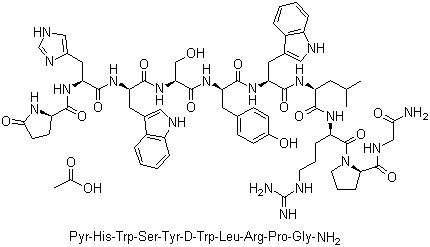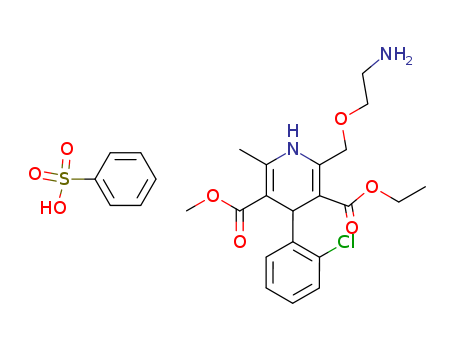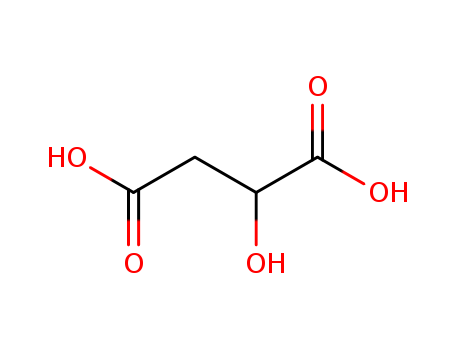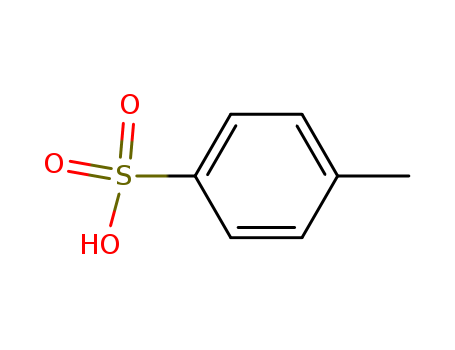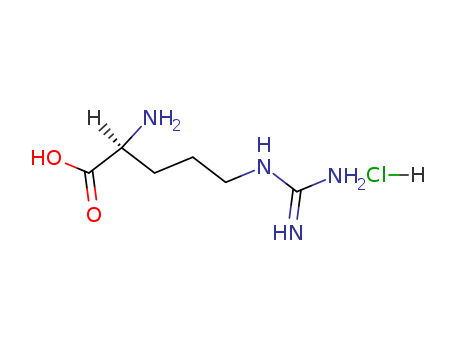
1119-34-2
- Product Name:2-Amino-5-guanidinovaleric acid monohydrochloride
- Molecular Formula:C6H14N4O2.HCl
- Purity:99%
- Molecular Weight:210.664
Product Details;
CasNo: 1119-34-2
Molecular Formula: C6H14N4O2.HCl
Appearance: White crystalline powder
Factory sells 2-Amino-5-guanidinovaleric acid monohydrochloride 1119-34-2 with sufficient production capacity
- Molecular Formula:C6H14N4O2.HCl
- Molecular Weight:210.664
- Appearance/Colour:White crystalline powder
- Vapor Pressure:7.7E-08mmHg at 25°C
- Melting Point:226-230 °C
- Boiling Point:409.1 °C at 760 mmHg
- PKA:1[at 20 ℃]
- Flash Point:201.2 °C
- PSA:125.22000
- Density:1.46 g/cm3
- LogP:1.35480
2-Amino-5-guanidinovaleric acid monohydrochloride(Cas 1119-34-2) Usage
|
Biochem/physiol Actions |
L-Arginine is considered as a semi essential amino acid. In most mammals including humans, L-Arginine synthesis occurs through intestinal-renal axis, from glutamine, glutamate and proline. Abnormal levels of L-Arginine is associated with the development of kidney and cardiovascular disease. L-arginine is found to decrease fat mass and visceral adiposity. |
|
Safety Profile |
Moderately toxic by intraperitoneal route. Mildly toxic by ingestion. An experimental teratogen. When heated to decomposition it emits very toxic fumes of NOx and HCl. |
|
Purification Methods |
A likely impurity is ornithine. Crystallise the salt from H2O at pH 5-7, by adding EtOH to 80% (v/v). [Greenstein & Winitz The Chemistry of the Amino Acids J. Wiley, Vol 3 p 1841 1961, Beilstein 4 IV 2649.] |
|
Chemical Composition |
Arginine Hydrochloride, also known as l-Arginine hydrochloride, is composed of the amino acid arginine and hydrochloric acid. |
|
Mechanism of Action |
Arginine Hydrochloride acts as an aggregation suppressor, reducing protein aggregation in solution. It interacts with protein molecules through hydrophobic and aromatic interactions, decreasing solution viscosity. |
|
FDA Approval |
The approval of arginine HCl for intravenous administration was reflected in the FDA's authorization of R-Gene 10 as a 10 gram (GM)/100 mL (100 mg/mL; 10 percent) injection for intravenous use. Additionally, arginine HCl is proposed for use in compounding single-ingredient drug products for oral use. Arginine HCl is considered suitable for compounding oral formulations for certain patients, particularly those with specific urea cycle disorders (UCDs). |
|
Brand name |
R-Gene 10 (Pharmacia & Upjohn). |
InChI:InChI=1/C6H14N4O2.ClH/c7-4(5(11)12)2-1-3-10-6(8)9;/h4H,1-3,7H2,(H,11,12)(H4,8,9,10);1H
1119-34-2 Relevant articles
Ruckerbactin Produced by Yersinia ruckeri YRB Is a Diastereomer of the Siderophore Trivanchrobactin Produced by Vibrio campbellii DS40M4
Butler, Alison,Dulaney, Kalana,Reitz, Zachary L.,Stow, Parker R.,Thomsen, Emil
, p. 264 - 269 (2022/01/15)
The Gram-negative bacterium Yersinia ruc...
LAT-1 activity of meta-substituted phenylalanine and tyrosine analogs
Augustyn, Evan,Finke, Karissa,Zur, Arik A.,Hansen, Logan,Heeren, Nathan,Chien, Huan-Chieh,Lin, Lawrence,Giacomini, Kathleen M.,Colas, Claire,Schlessinger, Avner,Thomas, Allen A.
supporting information, p. 2616 - 2621 (2016/05/09)
The transporter protein Large-neutral Am...
LAT1 activity of carboxylic acid bioisosteres: Evaluation of hydroxamic acids as substrates
Zur, Arik A.,Chien, Huan-Chieh,Augustyn, Evan,Flint, Andrew,Heeren, Nathan,Finke, Karissa,Hernandez, Christopher,Hansen, Logan,Miller, Sydney,Lin, Lawrence,Giacomini, Kathleen M.,Colas, Claire,Schlessinger, Avner,Thomas, Allen A.
supporting information, p. 5000 - 5006 (2016/10/05)
Large neutral amino acid transporter 1 (...
Micropeptins from an Israeli fishpond water bloom of the cyanobacterium microcystis sp
Zafrir, Ella,Carmeli, Shmuel
experimental part, p. 352 - 358 (2010/08/05)
Seven new natural products, micropeptin ...
1119-34-2 Process route
-
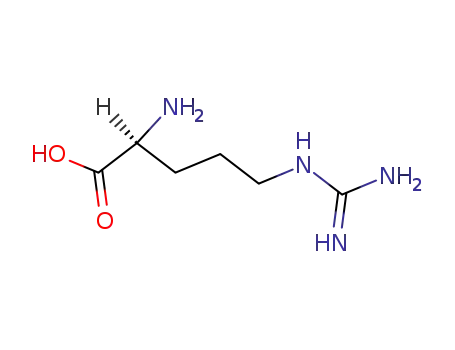
-
74-79-3,25212-18-4
L-arginine

-
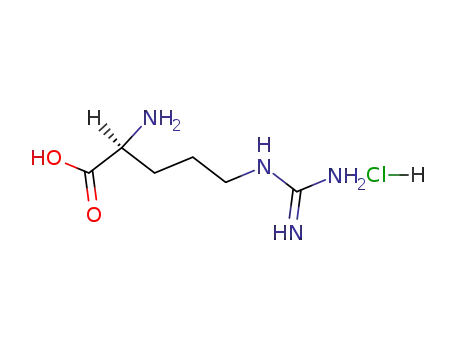
-
1119-34-2
L-arginine hydrochloride
| Conditions | Yield |
|---|---|
|
With
hydrogenchloride;
In
1,4-dioxane;
|
|
|
With
hydrogenchloride;
In
1,4-dioxane;
|
-
-
1207348-80-8
micropeptin MZ771

-
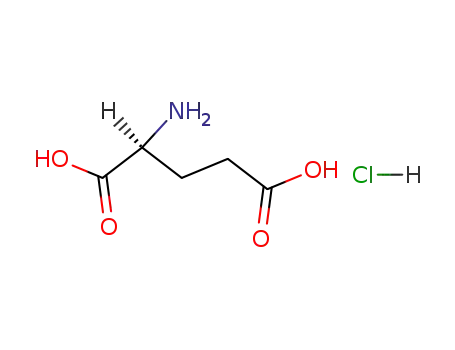
-
138-15-8
l-glutamic acid hydrochloride

-

-
1119-34-2
L-arginine hydrochloride

-
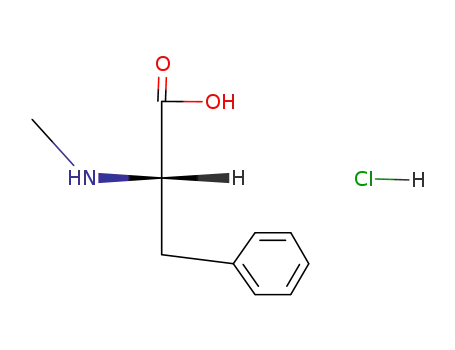
-
66866-67-9,1956434-77-7
N-methyl-L-phenylalanine hydrochloride

-

-
17694-98-3
L-isoleucine hydrochloride

-
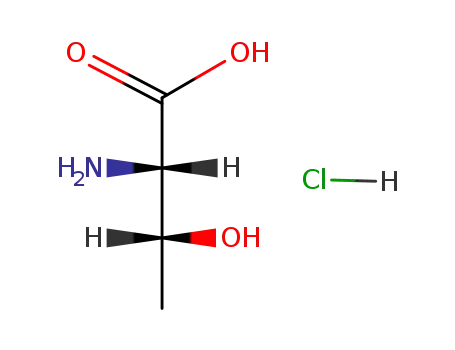
-
60143-52-4,71264-40-9,82650-07-5,97347-46-1,100157-61-7
L-threonine methyl ester hydrochloride
| Conditions | Yield |
|---|---|
|
micropeptin MZ771;
With
Jones reagent;
In
acetone;
at 0 ℃;
for 0.166667h;
With
hydrogenchloride; water;
at 110 ℃;
for 16h;
Sealed glass bomb;
|
1119-34-2 Upstream products
-
914606-75-0
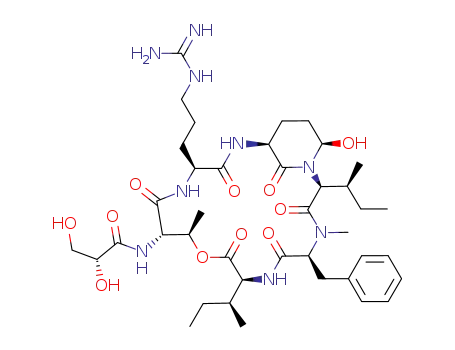
micropeptin MZ845
-
1207348-70-6
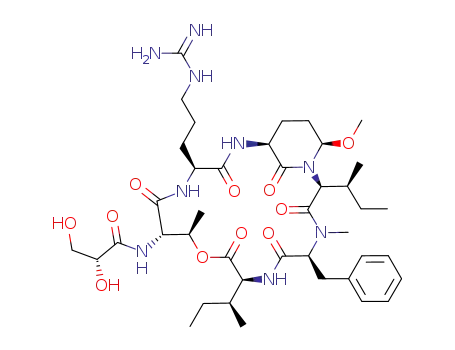
micropeptin MZ859
-
1207348-72-8
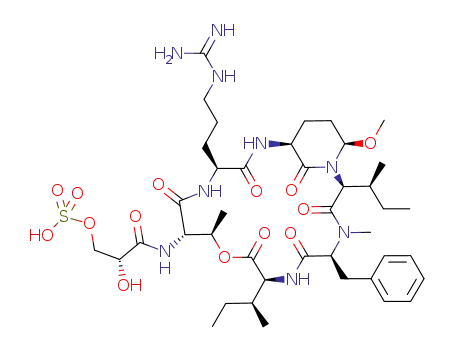
micropeptin MZ939A
-
1207348-74-0
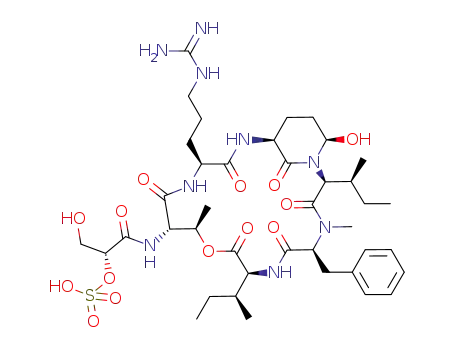
micropeptin MZ925
1119-34-2 Downstream products
-
2577-94-8
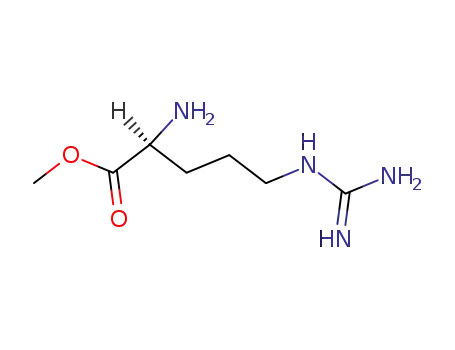
L-arginine methyl ester
-
80647-49-0
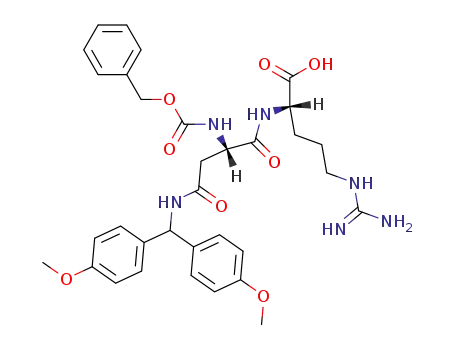
Z-Asn(Mbh)-Arg-OH
-
372-75-8
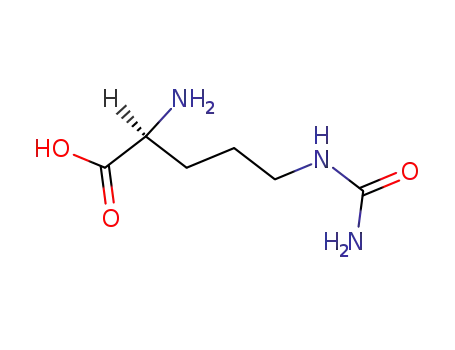
Citrulline
-
220144-84-3
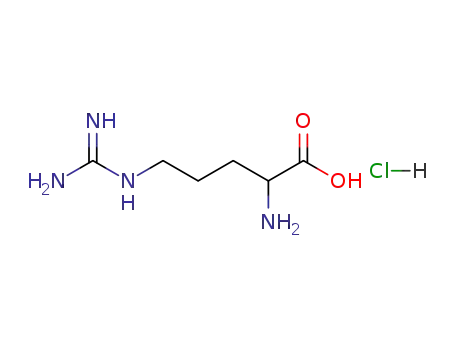
dl-arginine hydrochloride
Relevant Products
-
Amlodipine besylate
CAS:111470-99-6
-
Malic acid
CAS:6915-15-7
-
p-Toluenesulfonic acid
CAS:104-15-4


